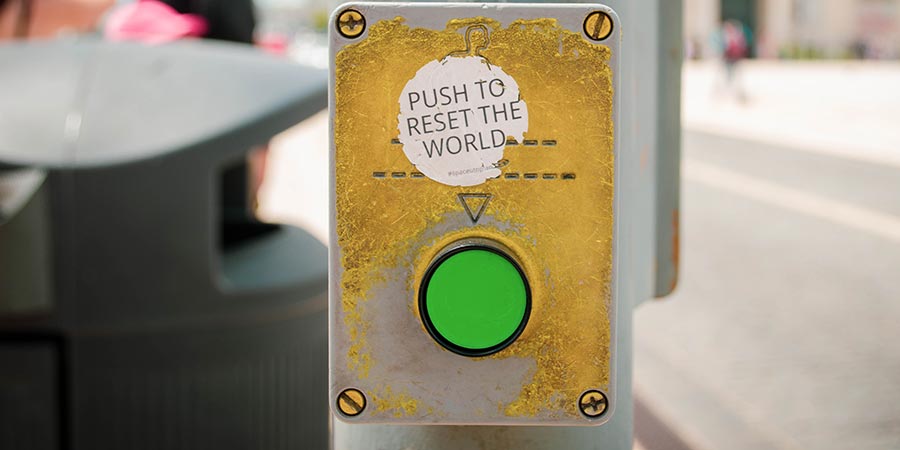You reinvent your firm one new client at a time.
Any agency leader should have a strategic vision of what success looks like a few years out. That vision will include the obvious financial metrics of revenue and profit, but also the type of clients on the roster, the nature and value of the work being done for those clients, the personnel make-up of the firm and the attitudes and beliefs of those team members. The surest way to improve each of these variables–and others–is through new clients, reinventing the firm with each new engagement, treating each new business opportunity as a chance to be that future firm.
I'll go further and assert that if that chance for reinvention represented by a new client is not capitalized on–if the client and the firm's services, behaviors and prices do not represent a step toward that future vision–then it is a step away from success; it is stagnation, calcification of the variables you are seeking to improve, making it less likely that your desired future state will ever arrive.
You Are Only A Few Steps from Reinvention
Let's do some math, a summary of topics I have written about elsewhere over the years. Most of these numbers come from my friend and 2Bobs podcast cohost David C. Baker. The typical creative firm should:
- Have a roster of 10-15 clients (Yes, most have more but should not.)
- Turn over its client base at a rate of 25%-33% per year (Churn is healthy. Too slow a rate of churn is just as problematic, typically, as too high a churn.)
- Have an annual new business goal, therefore, of 2-5 new clients of high quality. (Most firms bring in a higher number of less ideal clients in a year, trying to address a quality problem through quantity.)
You are only 3-4 years and 10-15 clients from being whatever you want your firm to be–if you treat every new client as a step in your reinvention.
A Line In Time
Once you have articulated your three-year vision of success, draw a line in time that is today. After today, it is a new attitude, new pricing, a new way of behaving. Clients that are on the roster today get the old you. Everyone you talk to after today gets the new you.
Five Things To Change With Every New Client
The first new client is going to set the tone for your march to reinvention, so aim high. Here are five areas where you should be looking to upgrade your culture through the next new client.
1. Mindset: From Vendor to Expert
The first thing you should look to change is how your team shows up in the sale. The sale is the sample of the relationship to follow. The role you will occupy in the engagement is established here in the sale. It's time to quit behaving as the needy vendor leaning on passion and enthusiasm and show up as the discerning expert who recognizes their own value.
Who is the prize to be won here, the client or you?
Be discerning of the fit. Push back on RFPs and other flawed selection processes. Raise any objections that you see to doing business together and ask the client to address them. Ask direct questions about budget and the client's likely annual spend with you should you work together. Everything starts with mindset and that begins at the first interaction with the prospective client.
2. Raise Your Prices Ridiculously High
Your prices are where they are now because you found an equilibrium years ago and then you slowly and incrementally raised those prices over time, each time settling at a new equilibrium. It's time to leap over the next decade or so of increments and price according to your future vision. You think the market won't bear those new prices but that's not what happens. What happens is your considerably higher prices let you create even more value for the client thereby forcing your own growth.
You read that correctly: your new higher prices will do more than almost anything else to improve the quality of your firm. Charging the client more will allow you to create more value for your clients. It's an upward spiraling helix of win-win for both parties.
In my experience, agency leaders do not aim high enough on this front. As of today, new clients equals new prices. Much higher new prices.
3. Cost-Based or Value-Focused
The way to raise your prices by leaps and bounds is to quit tethering your prices to your costs or what your competitors charge, and to set price as a function of the value to be created. For example, if your work will help a client to create $1m in recurring net new profit then maybe you should be paid $500k. If your contribution to that value creation isn't significant then the number might be lower. Or maybe it should be higher. If you're willing to put some of that compensation at risk, your prices might be higher still.
The above numbers are hypothetical and not meant to serve as a price-setting guide for you. I share them as an example only to illustrate that the price has been set as a function of value creation. I have said nothing about what you would actually do for those prices and that is the point: set your prices based on value creation, before any discussion of specific solutions.
This fundamental shift in how you set prices will have far reaching implications in your firm. You will look back on your old labor arbitrage business model with embarrassment when the realization hits you that all your platitudes about being client focused or being "a partner" were not true. You sold time, period.
When you price on value, you focus on value and you create a culture of value creation. Everything changes rapidly. If previously you felt trapped in a forcefield of $150k-$200k in revenue per employee you can now see that multiples of this are possible, into the high hundreds of thousands.
Price The Client is rule #1 from my book Pricing Creativity: A Guide to Profit Beyond The Billable Hour. Start with the next client.
4. Stop Overinvesting In The Sale
Improved sales success can often come down to three words: No Sunk Costs. If you do not overinvest in time, money or emotions then you will project an air of professionalism. The client will feel your discernment. You will keep from slipping into the old behavioral patterns of the needy vendor.
Quit traveling for meetings. Get your proposals down to one page (rule #6 in Pricing Creativity) and ditch the silly credentials deck presentation where you try to convince the client how amazing you are and why they should hire you. You're an adult. Adults have conversations. They don't build decks as tools of persuasion.
These are all key tenets of Win Without Pitching. Unless you're new here (welcome!) you know you should do these things. The place to do them is in the next opportunity. It's okay if you screw up, you'll get it right on the next one. Or the next one. But you reinvent the firm through these opportunities and you only need to get 3 to 5 of them right in a year. So keep pushing yourself and your team.
5. Embrace The One-Page Proposal
I've already mentioned this above but it's worth breaking out here because I want to make the point with a force that I did not employ in Pricing Creativity: the one-page proposal might be the most valuable constraint-driven exercise you do in your firm.
You cannot possibly put onto one page everything that you want to, everything that you have historically. Therefore the closing conversation becomes an actual conversation. Not a presentation. Not a document lobbed in over the fence.
This constraint of limiting your proposal to one page, with three ways the client might engage you, at three different price points (Offer Options, rule #2 in Pricing Creativity) will take the focus off of the document and put it on the conversation. The one page becomes a mere reference point for that conversation. "I've got three different ways you could engage us at three different price points. I've summarized them here. Let me explain them at a high level and we can discuss the details."
You have the mindset and behavior of an expert. You are in facilitation mode rather than convince mode. Your prices are high but rooted in value creation. You haven't overinvested in the sale.

